How to measure properties of pressure sensitive adhesive tapes
The numerical values that we test under restrictive conditions are basic indication of tape performance and feature descriptions of each tape. Please utilize them when you study which tape you need to use by the applications, conditions, adherends, and so on for your reference.
Tape structure
Single sided tape
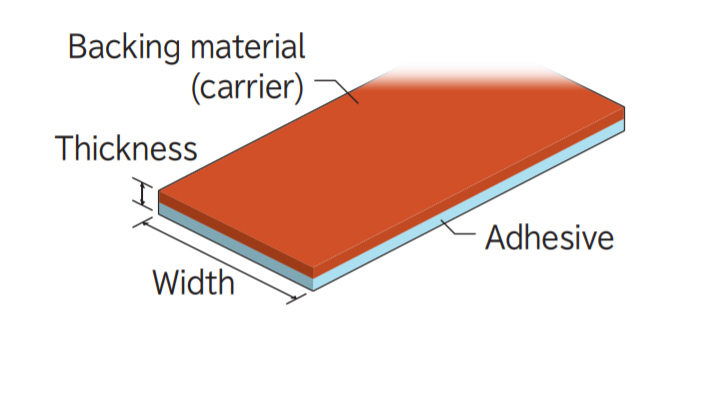
Double sided tape
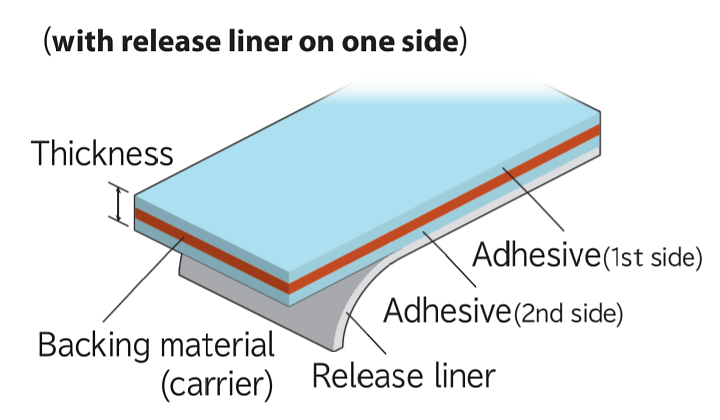
Double sided tape
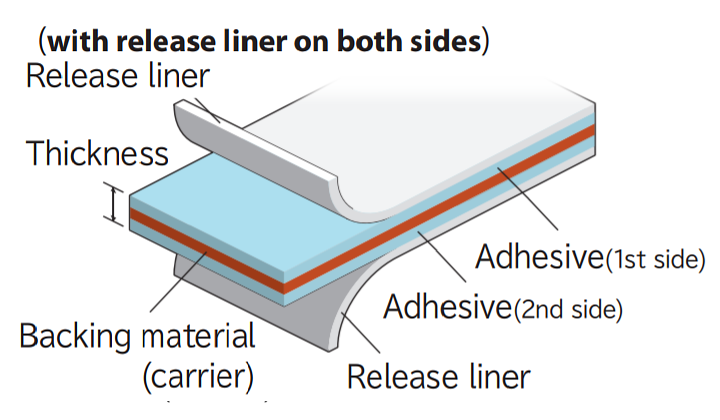
Explanation of test method
Adhesion
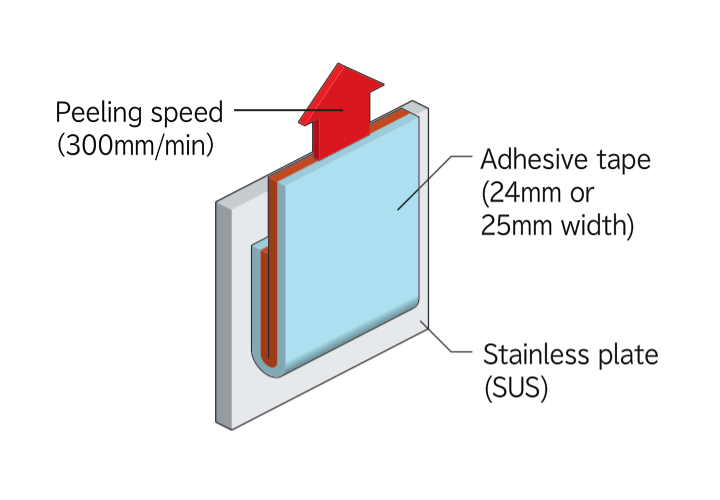
Force that is generated by peeling off the tape from stainless plate to the angle of 180° (or 90°).
It is the most common property to make a selection of tape. The value of adhesion varies by temperature,adherend (material the tape to be applied to), applyingcondition.
Tack
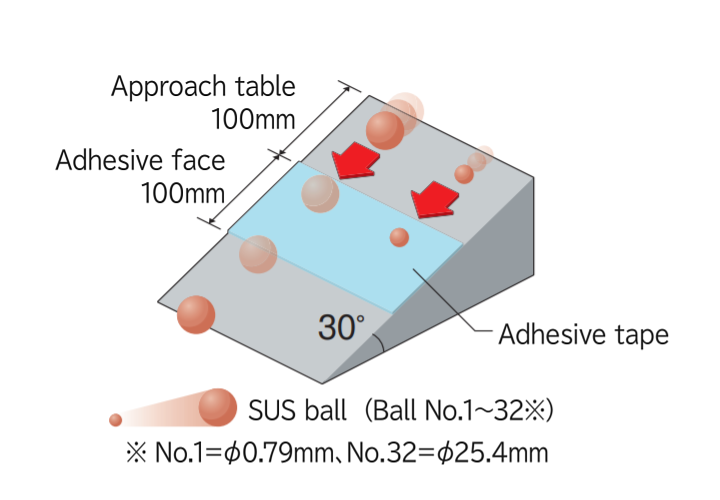
Force that is needed to adhere to adherend by light force. The measurement is done by setting adhesive tape with the adhesive face upward to the inclined plate with the angle of 30° (or 15°), and measure the maximum size of SUS ball, which stops completely within the adhesive face. This is the ef fective method to find initial adhesion oradhesion at low temperatures.
Holding power
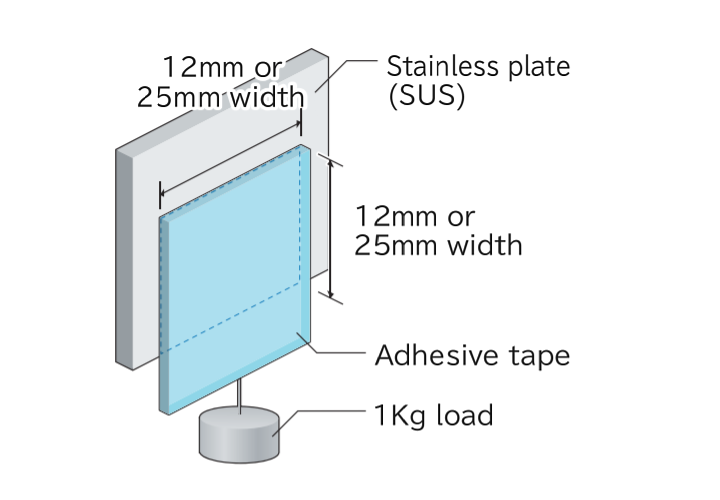
Resistant force of tape, which is applied to stainless plate with static load (typically 1kg) attached to the length direction.
Distance (mm) of displacement af ter 24 hours or time (min.) elapsed until the tape drops from the stainless plate.
Tensile strength
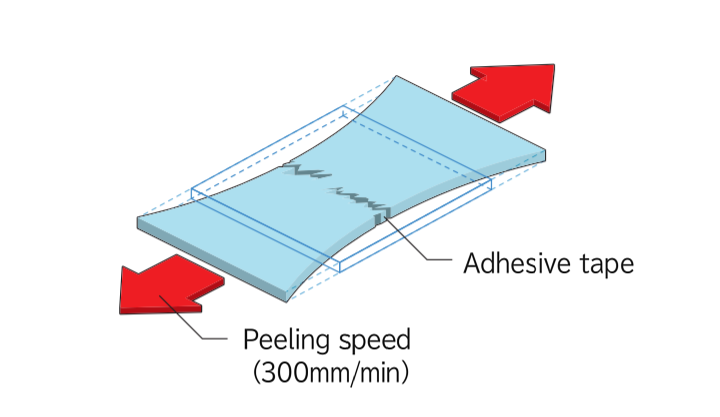
Force when tape is pulled from both ends and breaks. As larger the value is, the higher the strength of the backing material.
Elongation
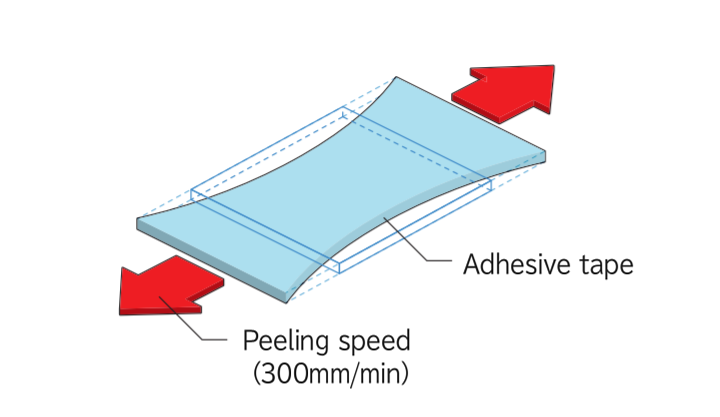
This is measured at the same time of measuring tensile strength.
Percentage of elongation, when tape is to be pulled from both ends until break, is measured.
If the value is 50%, it means 100mm tape is able to elongate to 150mm.
Shear adhesion (only relevant to double sided tape)
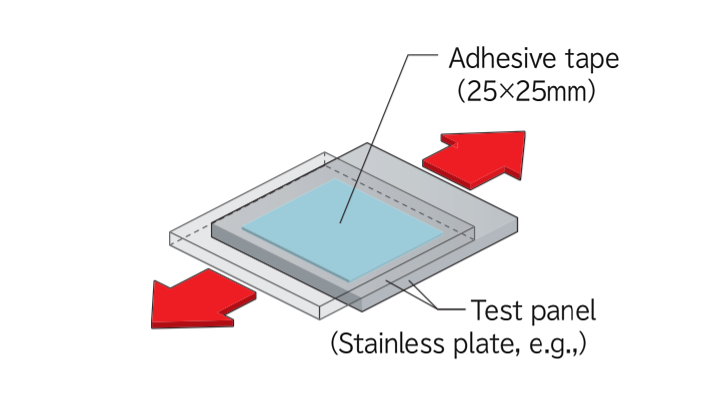
Force when double sided tape is sandwiched with two test panels and pulled from both ends until break.
Conversion of value


